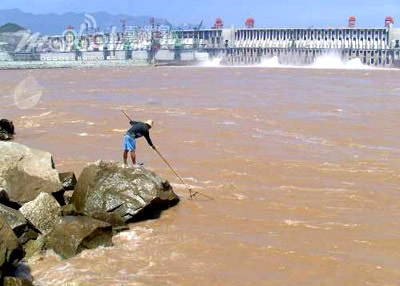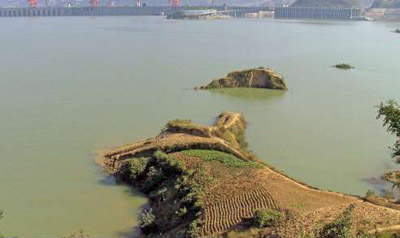| Home / Environment / Ecology and China | Tools: Save | Print | E-mail | Most Read |
| Scientists Say Climate Change Reducing Flow of Rivers |
| Adjust font size: |
Climate change linked to the contraction of wetlands at the source of the country's two longest rivers, the Yangtze and the Yellow, has reduced the volume of water flowing in them, scientists said.
Scientists from the institute of mountain hazards and environment under the Chinese Academy of Sciences (CAS) studied changes over the past 40 years to the wetlands on the cold Qinghai-Tibet Plateau in west China where the two rivers have their source. Analyzing aerial photos and satellite remote-sensing figures, they found the wetlands on the plateau have shrunk more than 10 percent over the past four decades. The wetlands at the origin of the Yangtze have suffered the most, contracting by 29 percent. In addition, about 17.5 percent of the small lakes at the source of the Yangtze have dried up, the scientists said. "The wetland plays a key role in containing water and adjusting the water volume of the rivers," Wang Xugen, a researcher with the institute, said. "The shrinking of the wetland on the plateau is closely connected with global warming," Wang said, adding that - even though rainfall has increased in the region - the contraction of the wetland has reduced the flow of the Yangtze and Yellow rivers. Figures by the World Wildlife Fund (WWF) weather station at the head of the Yangtze showed annual rainfall at its source increased from 260 mm during 1991-2000 to 323 mm in the period 2001-06. "But the increased rainfall didn't lead to more water flow in the rivers because the evaporation was so fast as a result of global warming," Li Shijie, a researcher with the Nanjing institute of geography and limnology under the CAS, said.
Another WWF study showed global warming has caused glaciers to shrink, frozen earth to melt, grasslands to turn yellow and rivers to dry up. The Qinghai-Tibet Plateau used to boast 36,000 glaciers covering an area of 50,000 sq km. In the past 100 years, their area has shrunk by 30 percent. (Xinhua News Agency, China Daily July 16, 2007) |
| Tools: Save | Print | E-mail | Most Read |
 |
| Related Stories |

